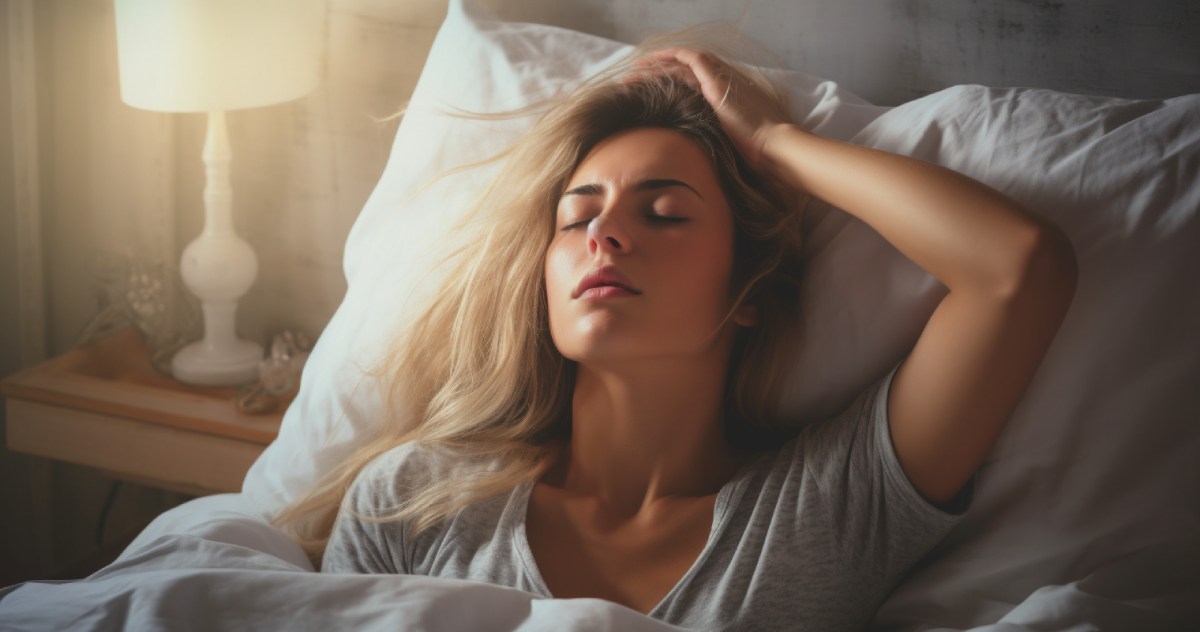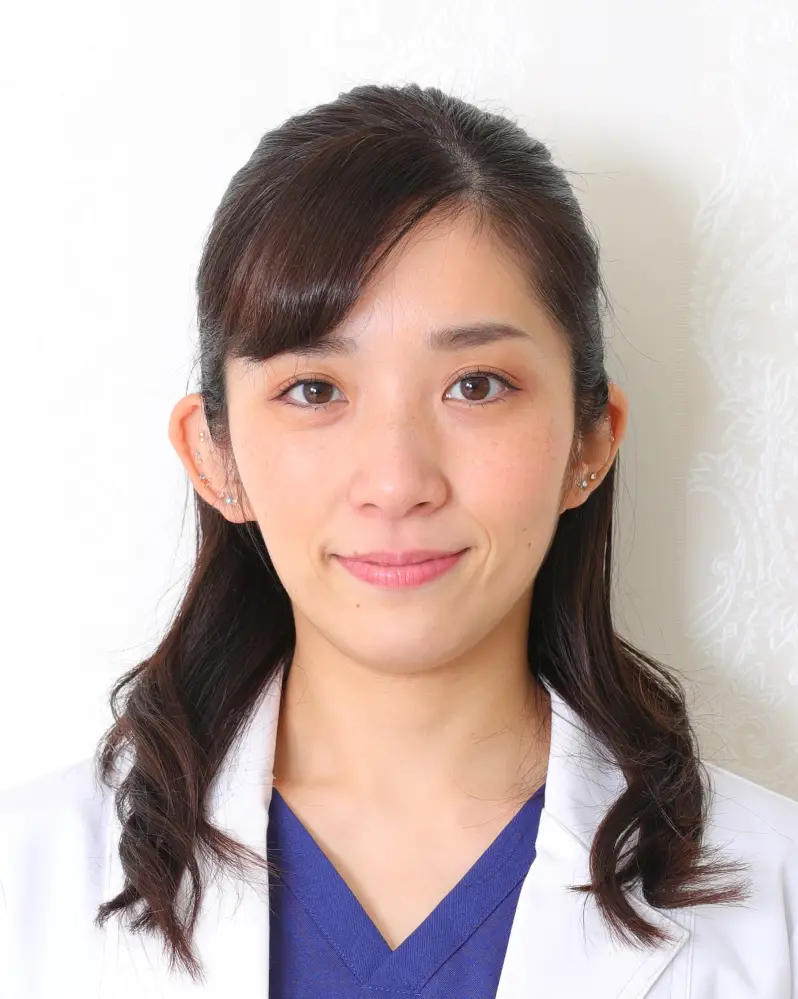Acupressure for headaches is an ancient technique rooted in Traditional Chinese Medicine, offering a non-invasive approach to headache relief. This article provides a comprehensive guide to using acupressure to alleviate various types of headaches, from tension headaches to migraines. You’ll learn about the specific acupressure points recommended by senior TCM therapist Ms. Mai Sogawa and how to apply pressure effectively for the best results.
Quick Reference Table: Acupressure Points for Different Types of Headaches:
| Type of Headache | Recommended Acupressure Points |
|---|---|
| Tension Headaches | GB-20, BL-10, GB-12, GB-21, GV-20, Liv-8 |
| Migraines | LI-4, GB-41, EM-5, TE-5, GB-8, Liv-8, LU-5, Liv-3, LU-9 |
| Frontal Headaches | GV-23, LI-2, ST-36, ST-42, BL-60, LI-4 |
| Chronic Headaches | Liv-3, ST-36, SP-6, LI-11, GV-20 |
| Occipital Headaches | GB-8, GB-7, TE-20, ST-8 |
What is Acupressure
Acupressure is an ancient healing technique rooted in Traditional Chinese Medicine (TCM). It involves applying manual pressure to specific points on the body, known as acupoints, to stimulate the flow of energy or “qi.” Unlike acupuncture, which uses needles, acupressure relies solely on using fingers, palms, or specialized devices to apply pressure. The practice is often sought after to help relieve headaches, among other ailments, by targeting specific acupoints that are believed to alleviate tension and improve blood circulation. Acupressure offers a non-invasive approach to headache relief, making it a popular choice for those looking for natural remedies.
Benefit of Acupressure For Headaches
Acupressure offers a range of benefits, particularly when it comes to alleviating headaches. By targeting specific pressure points for headaches, you can achieve the following:
- Muscle Relaxation: Helps relax the muscles around the head and neck, often alleviating tension headaches.
- Improved Blood Circulation: Enhance blood flow, beneficial for headaches caused by poor circulation or high-stress levels.
- Natural Pain Relief: Serves as a non-pharmaceutical form of pain relief, offering an alternative to medication for headache relief.
- Stress Reduction: Helps reduce stress by balancing the body’s energy flow, potentially reducing the frequency of stress-related headaches.
- Versatility: Not limited to treating headaches, acupressure can also be used for various ailments, making it a versatile tool for overall well-being.
Acupressure Points for Headaches
According to Ms. Mai Sogawa, a senior TCM therapist who graduated from Japan Medical School of Judo Acupuncture and Moxibustion International Education College, acupressure offers a variety of points that can be targeted for different types of headaches. Here’s a breakdown of the acupoints she recommends for acupressure for headache relief:
Acupressure Points for Tension Headaches
- GB-20: Located at the back of the head, on both sides, about an inch into the hairline. You can find it by placing your thumbs on either side of the base of your skull and sliding them slightly upward until you feel two distinct indentations.
- BL-10: Located at the back of the neck, half an inch directly above the hairline, in a small indentation near the edge of the muscle.
- GB-12: Behind the ear, in the depression, just behind the bony prominence.
- GB-21: In the middle between the neck’s base and the shoulder’s tip.
- GV-20: At the top of the head, where an imaginary line connects the earlobe and the center of the forehead.
- Liv-8: On the inner side of the knee, at the end of the crease when the knee is bent.
Ms. Sogawa emphasizes that muscles are governed by the liver organ in traditional Chinese medicine. Therefore, the acupoint Liv-8 is particularly useful for tension headaches as it cools the liver meridian and regulates energy flow.
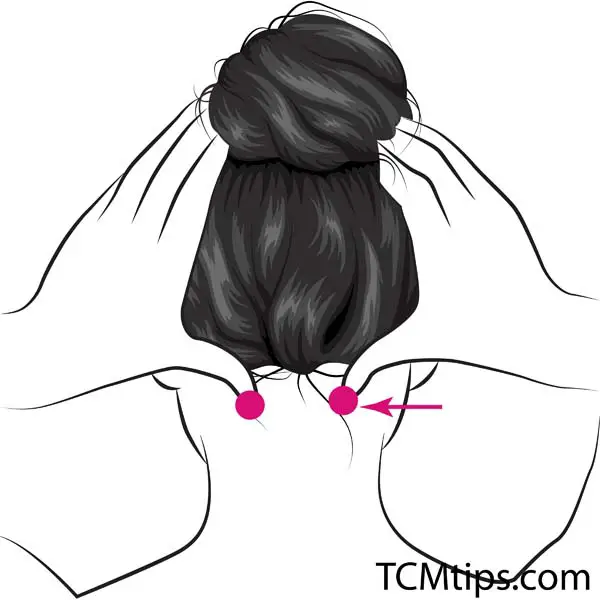
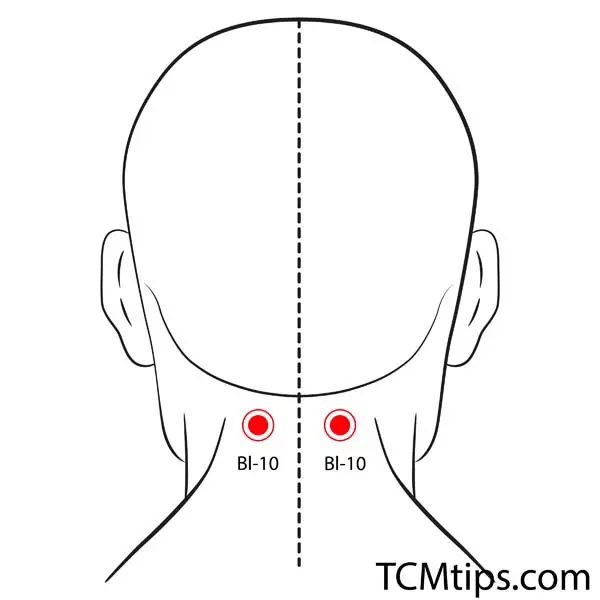
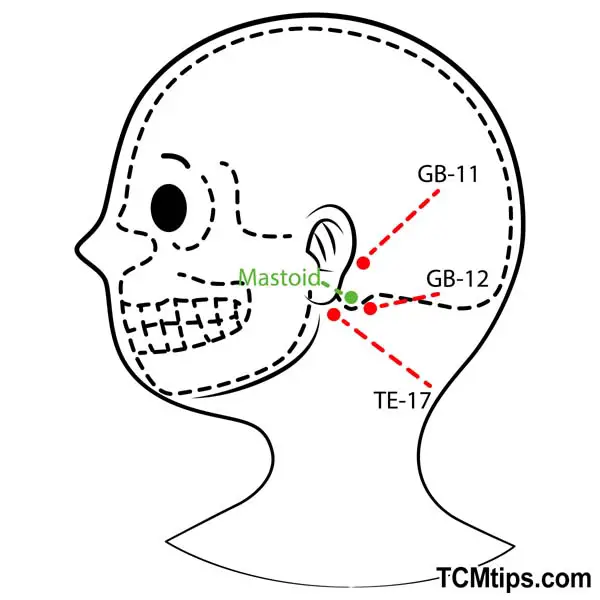
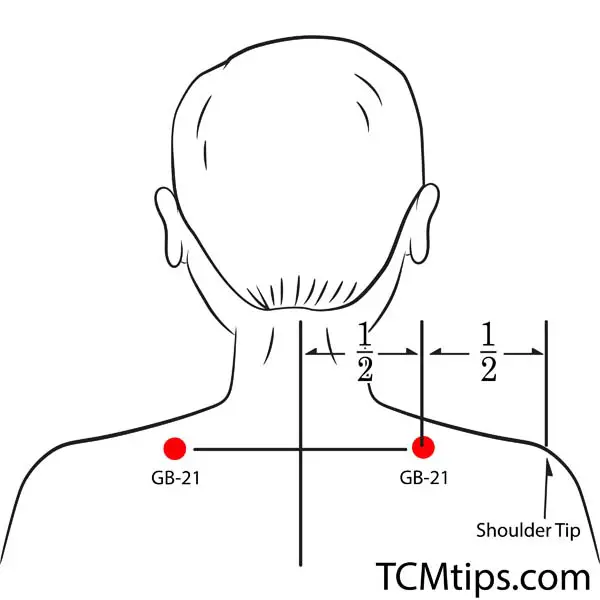
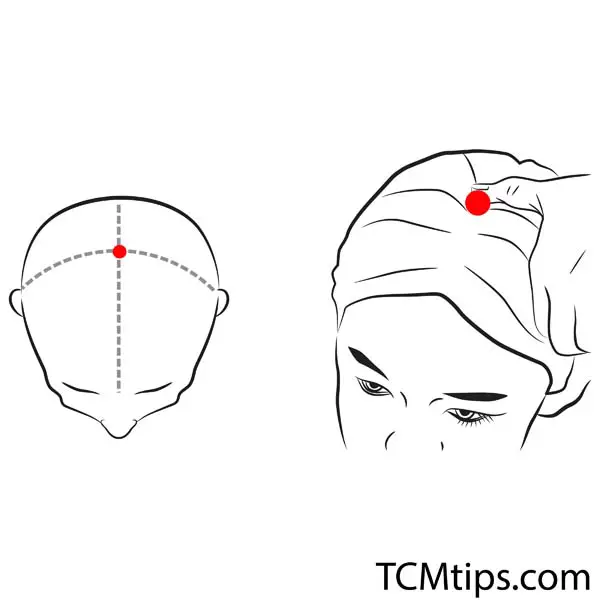
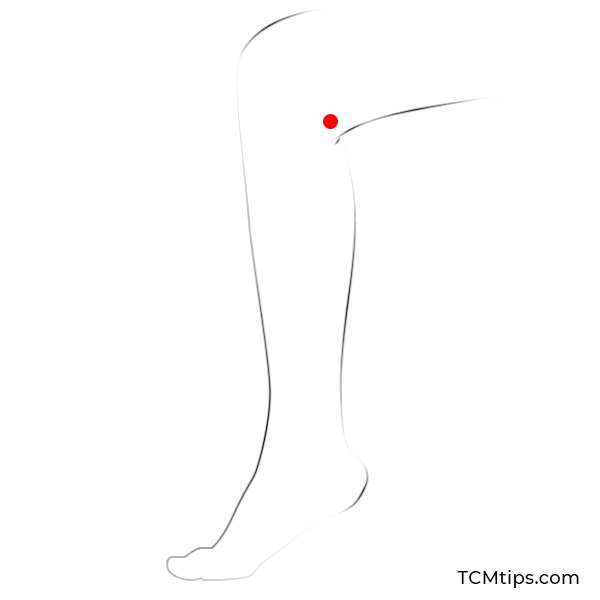
Acupressure Points for Migraines (Temporal Headaches)
- LI-4: Located on the back of the hand, between the thumb and index finger.
- GB-41: On the top of the foot, where the bones of the fourth and fifth toes meet.
- EM-5: In the depression between the eyebrow and the outer corner of the eye, about one thumb-width towards the ear.
- TE-5: Three finger-widths from the center of the wrist towards the elbow.
- GB-8: Two finger-widths above the tip of the ear.
- Liv-8: On the inner side of the knee, at the end of the crease when the knee is bent.
- LU-5: On the inner side of the elbow, just outside the bony prominence.
- Liv-3: Located on the top of the foot, in the depression between the first and second metatarsal bones.
- LU-9: On the palm side of the hand, in the depression beneath the thumb where you can feel a pulse.
The last 4 acupressure points are particularly effective for migraines as they focus on cooling the liver meridian, regulating the autonomic nervous system, and promoting energy circulation, according to Ms. Mai Sogawa.
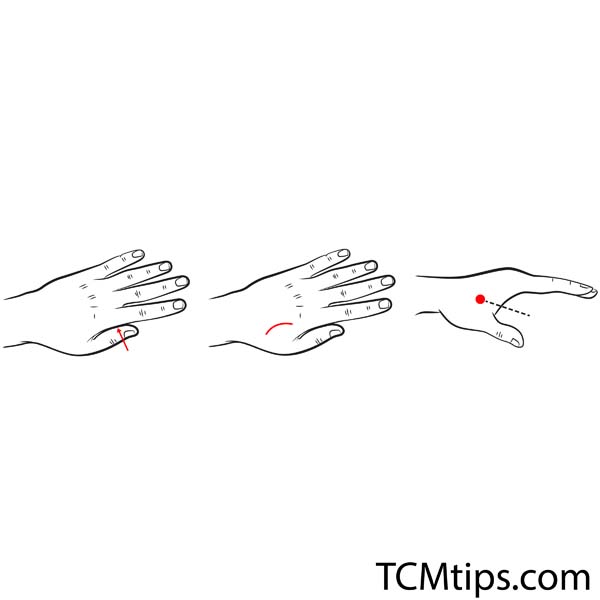
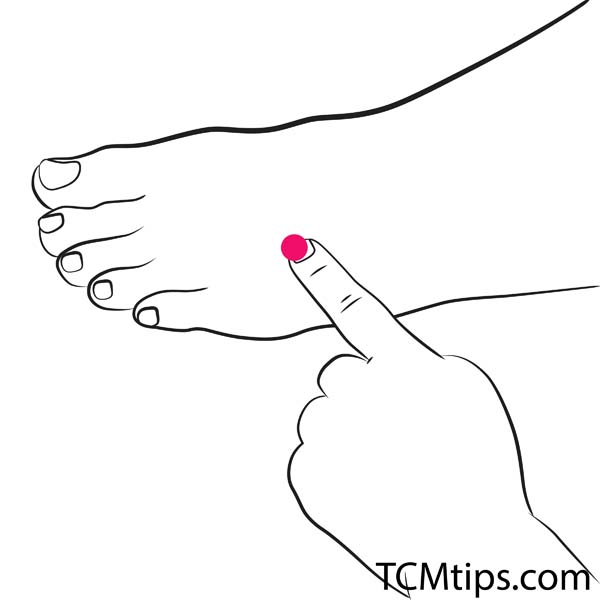
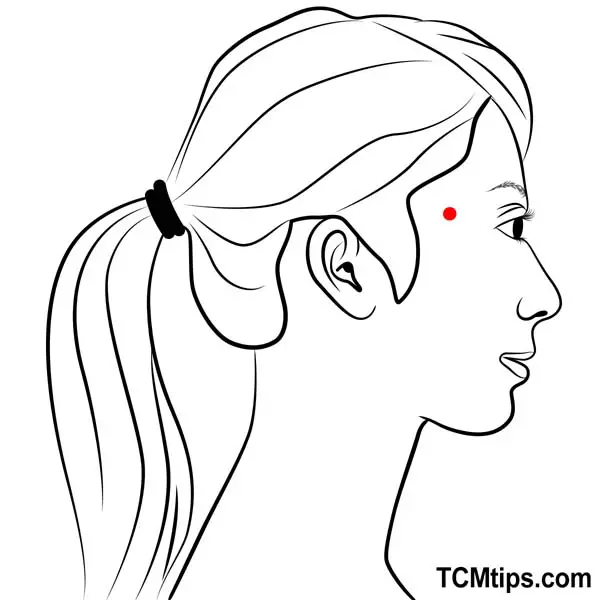
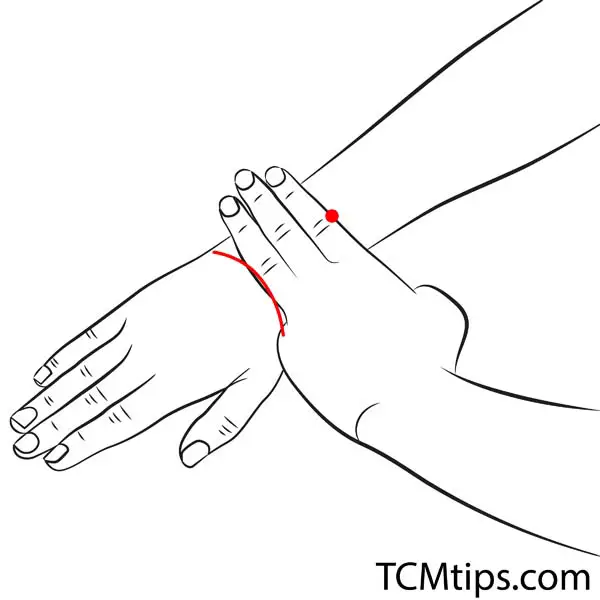
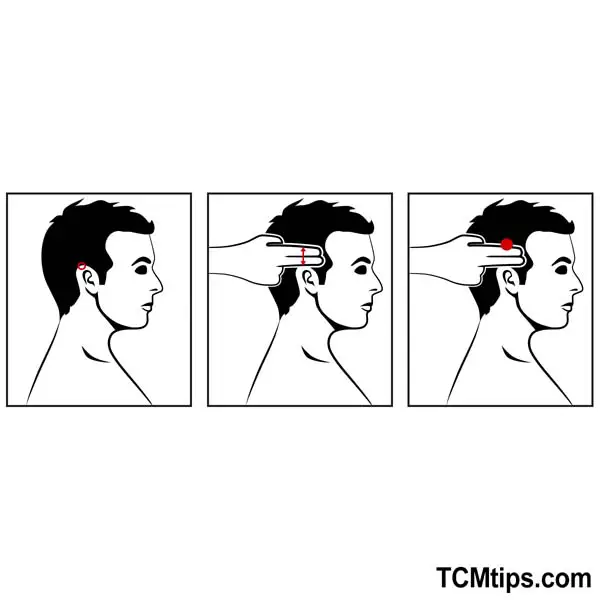

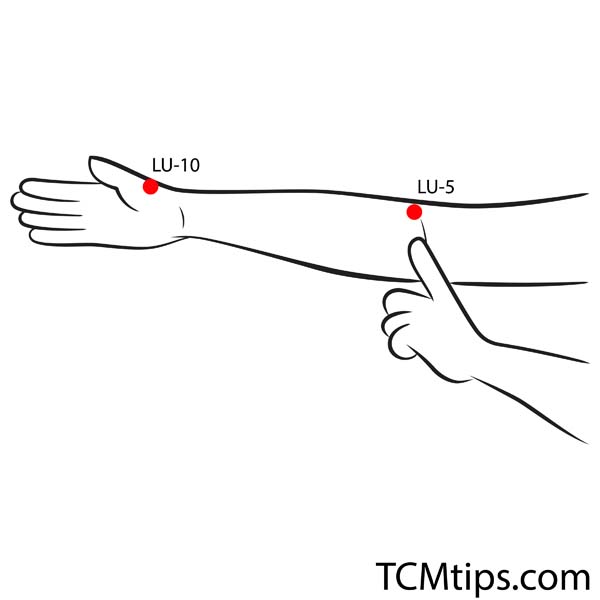
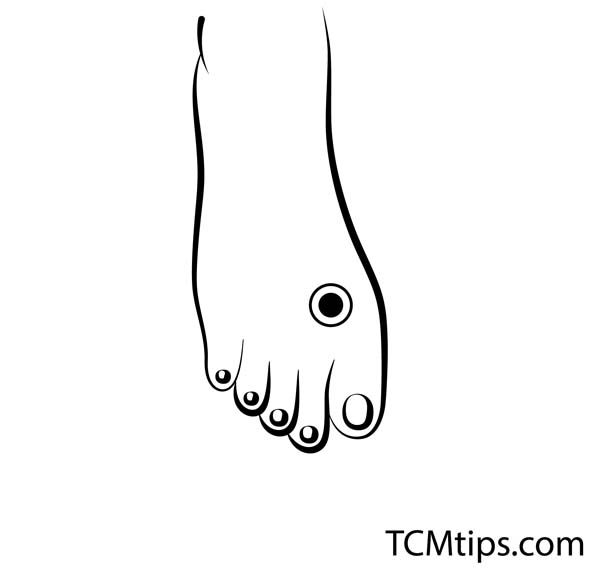
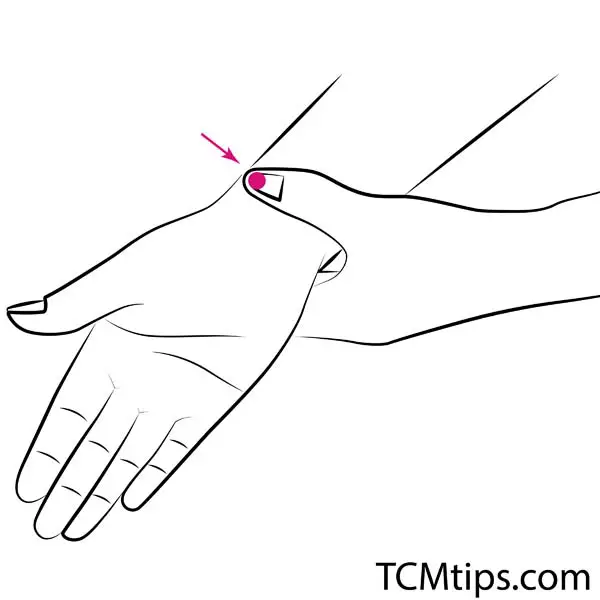
Acupressure Points for Frontal Headaches
- GV-23: In the center of the forehead, about one thumb-width above the hairline.
- LI-2: At the base of the index finger, on the thumb side of the hand.
- ST-36: Located four finger-widths below the kneecap and one finger-width to the outside of the shinbone.
- ST-42: On the top of the foot, where the bones of the second and third toes meet.
- BL-60: Between the outer ankle bone and the Achilles tendon.
- LI-4: Located on the back of the hand, between the thumb and index finger.
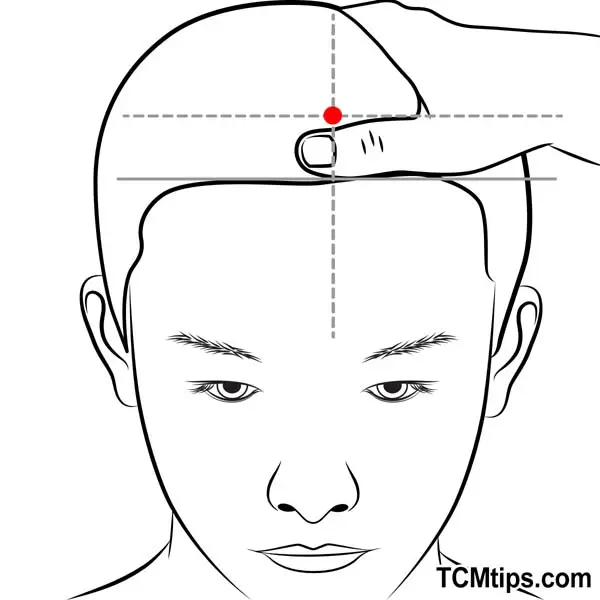
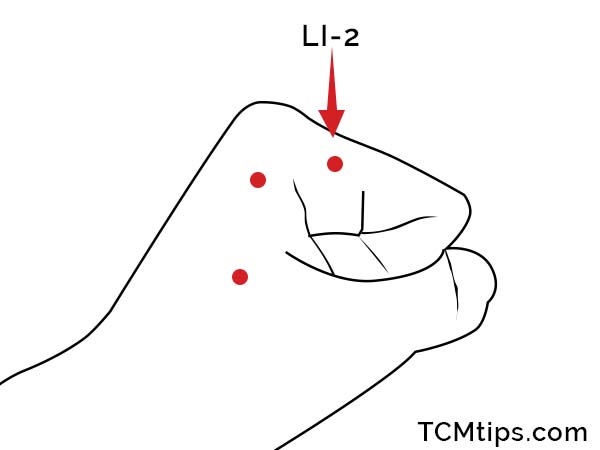
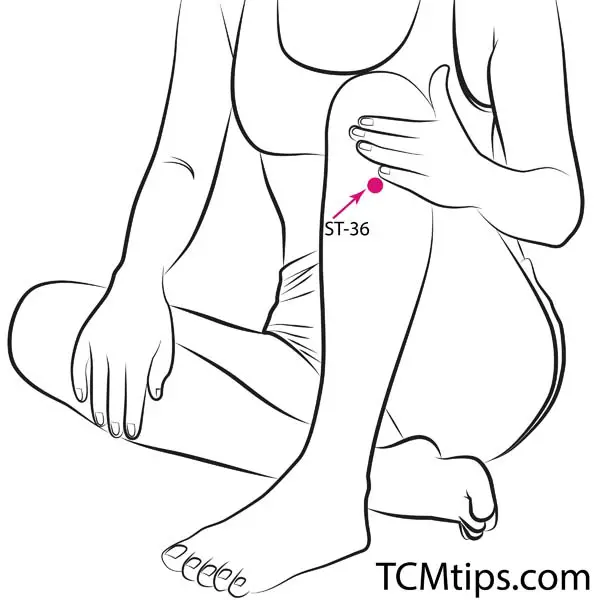
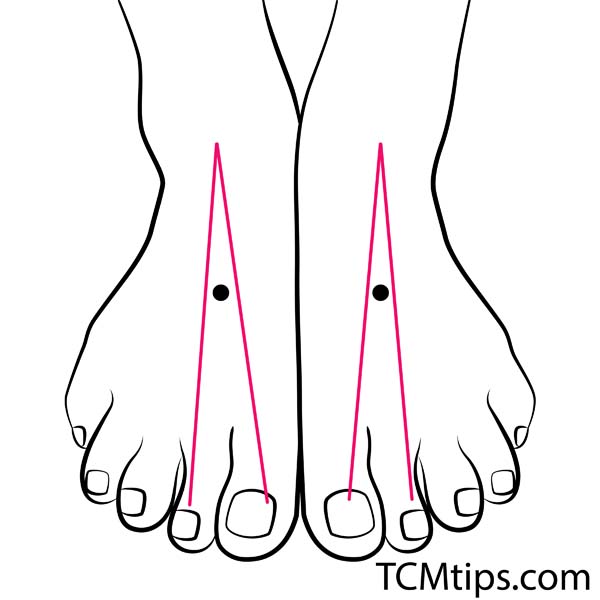
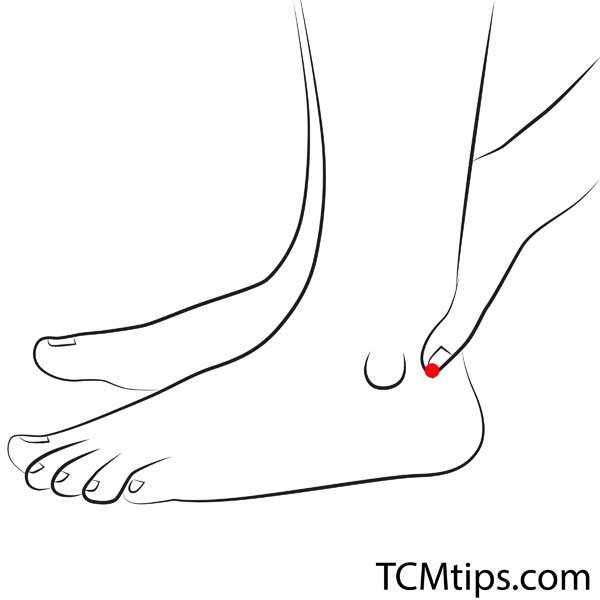

Acupressure Points for Chronic Headaches
- Liv-3: Located on the top of the foot, in the depression between the first and second metatarsal bones.
- ST-36: Four finger-widths below the kneecap and one finger-width to the outside of the shinbone.
- SP-6: Four finger-widths above the inner anklebone, close to the back of the shinbone.
- LI-11: On the outside of the elbow, just outside the crease when the elbow is bent.
- GV-20: At the top of the head, where an imaginary line connects the earlobe and the center of the forehead.
Ms. Sogawa suggests assessing and determining the areas of pain in the frontal, temporal, and occipital regions to choose the appropriate acupoints. Each painful area corresponds to specific meridians, and acupressure points are used for relief along those meridians. This approach allows for a more focused and effective use of acupressure for pain and headaches.


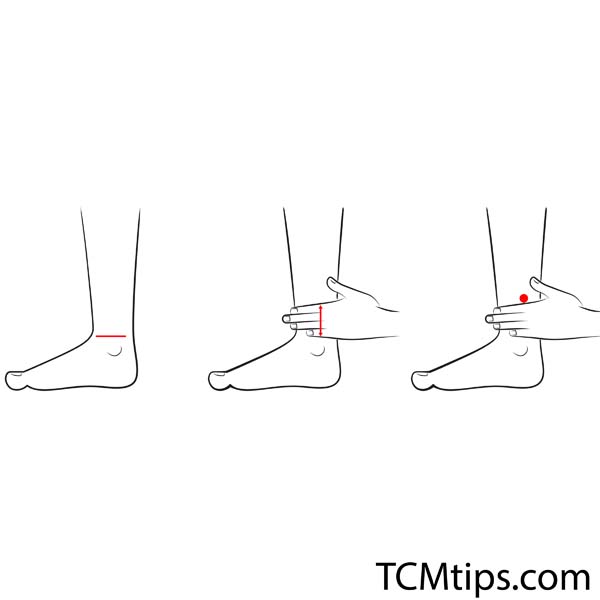
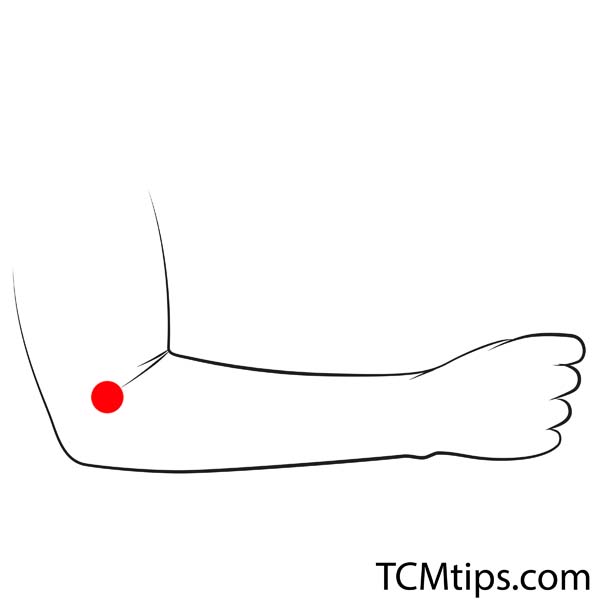

Acupressure Points for Occipital Headaches
- GB-8: Located two thumb-widths above the tip of the ear.
- GB-7: Located on both sides of your head, where a vertical line from the back edge of your temple’s hairline meets a horizontal line from the tip of your ear.
- TE-20: Located on both sides of your head, where a line from the tip of the folded-forward earlobe meets the hairline.
- ST-8: Positioned at the corner of the forehead, near the hairline.
These points are particularly effective for occipital headaches, which often manifest as pain in the back of the head.

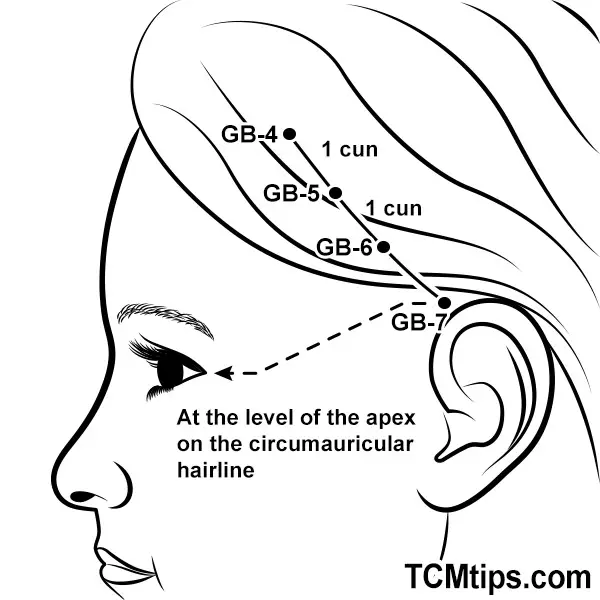
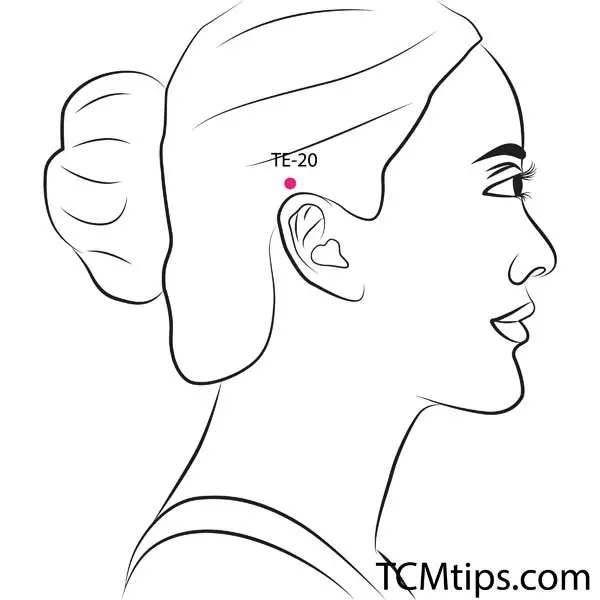
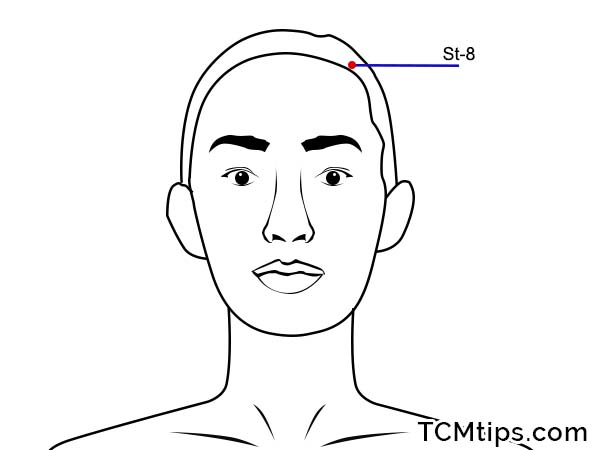
Techniques for Using Pressure Points to Treat Headaches
Using the correct technique is essential when applying acupressure for headache relief or targeting a pressure point to stop a migraine. According to Ms. Mai Sogawa:
- Press Slowly: Begin by pressing each acupoint slowly with your fingers. The pressure should be applied for about 3 seconds.
- Gentle Massage: If it feels comfortable, enhance the effect by applying pressure while gently massaging or circling the area. This helps relax the surrounding muscles and makes the acupressure more effective.
Additional Tips for Beginners
If you’re new to acupressure for headache relief, Ms. Mai Sogawa has some invaluable advice to make your experience more effective and comfortable.
Incorporate Stretching
Incorporating stretching along with acupressure can be highly effective. Stretching helps further relax the muscles and improve blood circulation. This is particularly beneficial for tension headaches, where muscle tightness and poor circulation are common issues.
Warm Up the Area
You can enhance the effects of acupressure by warming up the area before you begin. This can be done using a hot shower or a hot towel. Warming up the area can make it more receptive to treatment, especially when your headache feels better when pressure is applied.
Frequency of Practice
Incorporating these acupressure techniques into your daily routine for prevention and relief is ideal. Regular practice can be beneficial even before you start to feel any pain. However, if daily practice seems challenging, it’s recommended to start when you begin to sense the onset of a headache and continue for several days even after the headache has subsided.
For Acupressure Newbies
If you’re new to alternative therapies like acupressure, don’t worry. Acupressure is a convenient and risk-free technique that can be done anytime and anywhere. It’s recommended for daily self-care.
Trust Your Sensations
The acupressure points have specific locations, but pinpoint accuracy is not the primary concern. Pressing the points and seeing if it feels comfortable and effective is more important. Trust your sensations when performing acupressure to treat headaches.
Does Acupressure Work for Headaches?
To understand the effectiveness of acupressure for headache relief, we can look at scientific trials that have been conducted on this subject. Two such trials are:
- A Randomized Controlled Trial on the Effectiveness of Acupressure on Headache
- The Effectiveness of Acupressure on Relieving Pain: A Systematic Review
Findings from the First Trial
The first trial, published on NCBI, aimed to investigate the effectiveness of acupressure on headache symptoms. The study found that acupressure effectively reduced the severity and duration of headaches in the participants. The trial concluded that acupressure could be a viable alternative to medication for headache relief.
Findings from the Second Trial
The second trial, also published on PubMed, was a systematic review that looked at the effectiveness of acupressure in managing different types of pain, including chronic headaches. The study found that acupressure effectively relieves various pains in different populations. It establishes a credible evidence base for using acupressure in pain relief.
Both trials support the effectiveness of acupressure for headache relief. Acupressure can be a viable alternative to medication for managing headache symptoms. The second trial provides a broader perspective, suggesting that acupressure is effective for various types of pain, including chronic headaches.
By examining these trials, we can conclude that acupressure holds promise as an effective method for headache relief. However, consulting healthcare providers for a comprehensive treatment plan is essential.
Precautions and Considerations
When applying acupressure for headache relief, it’s crucial to take certain precautions to ensure both effectiveness and safety. Ms. Mai Sogawa provides the following guidelines:
- Before or After Meals: Avoid performing acupressure immediately before or after a meal. The practice may not be comfortable when the stomach is either too full or too empty.
- After Consuming Alcohol: It’s best to refrain from acupressure if you’ve consumed alcohol. Alcohol in your system can interfere with the effectiveness of the technique.
- In Case of Fever: Acupressure should not be performed if you have a fever or an elevated body temperature.
- Adjust Pressure: If pressing on a specific point causes pain, adjust the pressure to a level that feels comfortable and therapeutic rather than painful.
- Risks of Overdoing: Excessive or prolonged acupressure can lead to adverse reactions such as muscle soreness or a healing crisis. It’s essential to be cautious and avoid overdoing it.
- Ensuring Correct Technique: The ideal sensation during acupressure should be one of slight discomfort, a pleasant discomfort, or overall comfort. This helps ensure you press the right pressure points for headaches and use the correct technique.
- Complementary to Conventional Medicine: Acupressure is often utilized as a complementary therapy alongside conventional medical treatments. This integrative approach can enhance overall treatment efficacy and provide holistic care. While acupressure can offer significant benefits, it is not a substitute for professional medical advice or treatment for various conditions.
- Consultation with Health Professionals: Prior to starting acupressure, obtaining guidance from a medical professional ensures that the chosen therapy aligns with one’s overall health status and treatment goals, especially for those with health conditions like heart disease, cancer, or pregnancy.

Try our Anti-Aging Gua Sha Tool designed to bring out your skin’s natural glow.
Best Gua Sha Product- Anti-Aging: The tool is designed to target 11 specific aging signs such as wrinkles and sagging skin. By following the 7-step routine, users can improve skin firmness and reduce fine lines naturally.
- Enhances Skincare Routine: It works effectively with serums and lotions, boosting absorption and efficacy of skincare products.
- Visible Skin Improvement: Users can expect a smoother complexion, reduced puffiness, and a more youthful appearance.
 P. Sze
P. Sze 